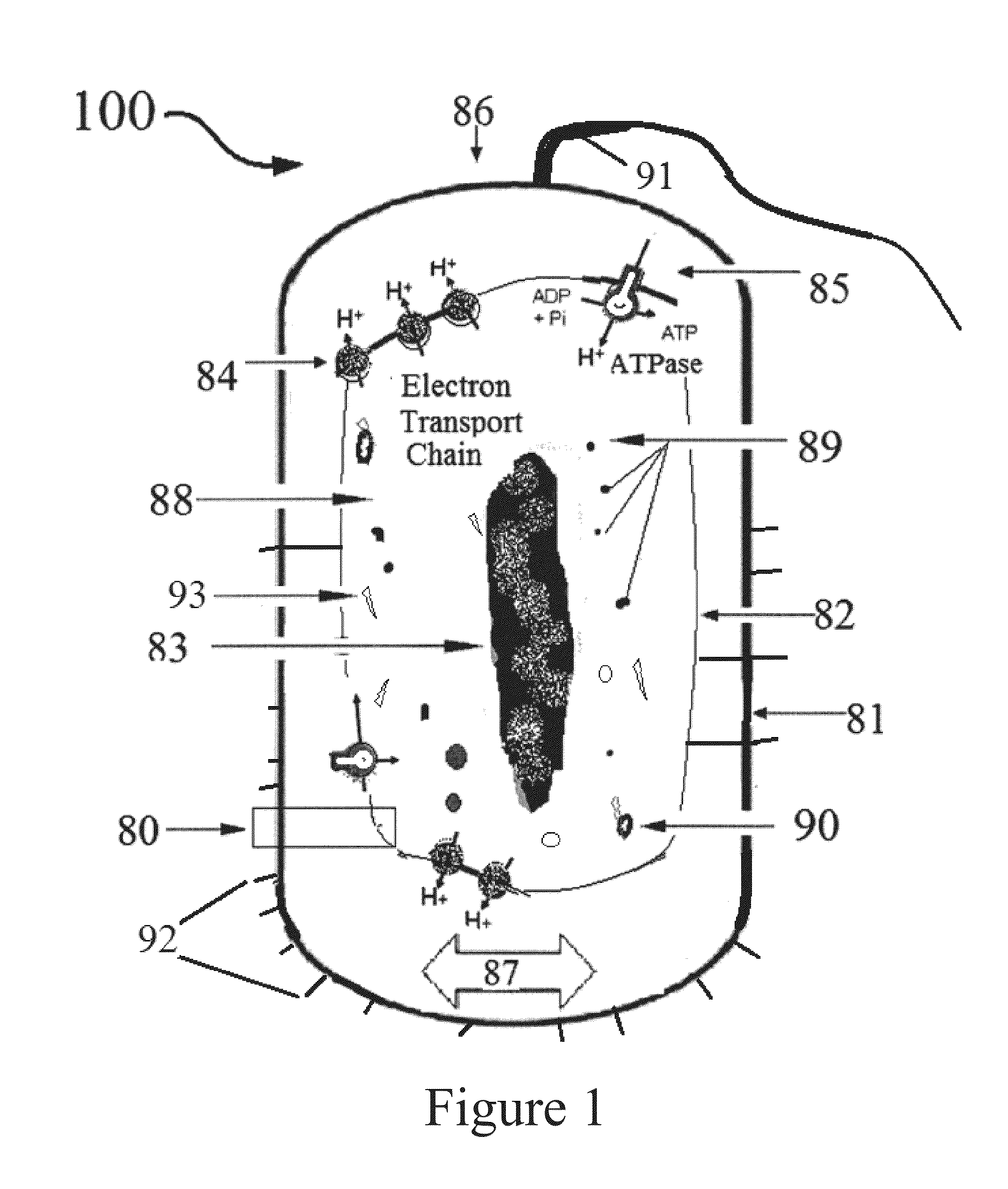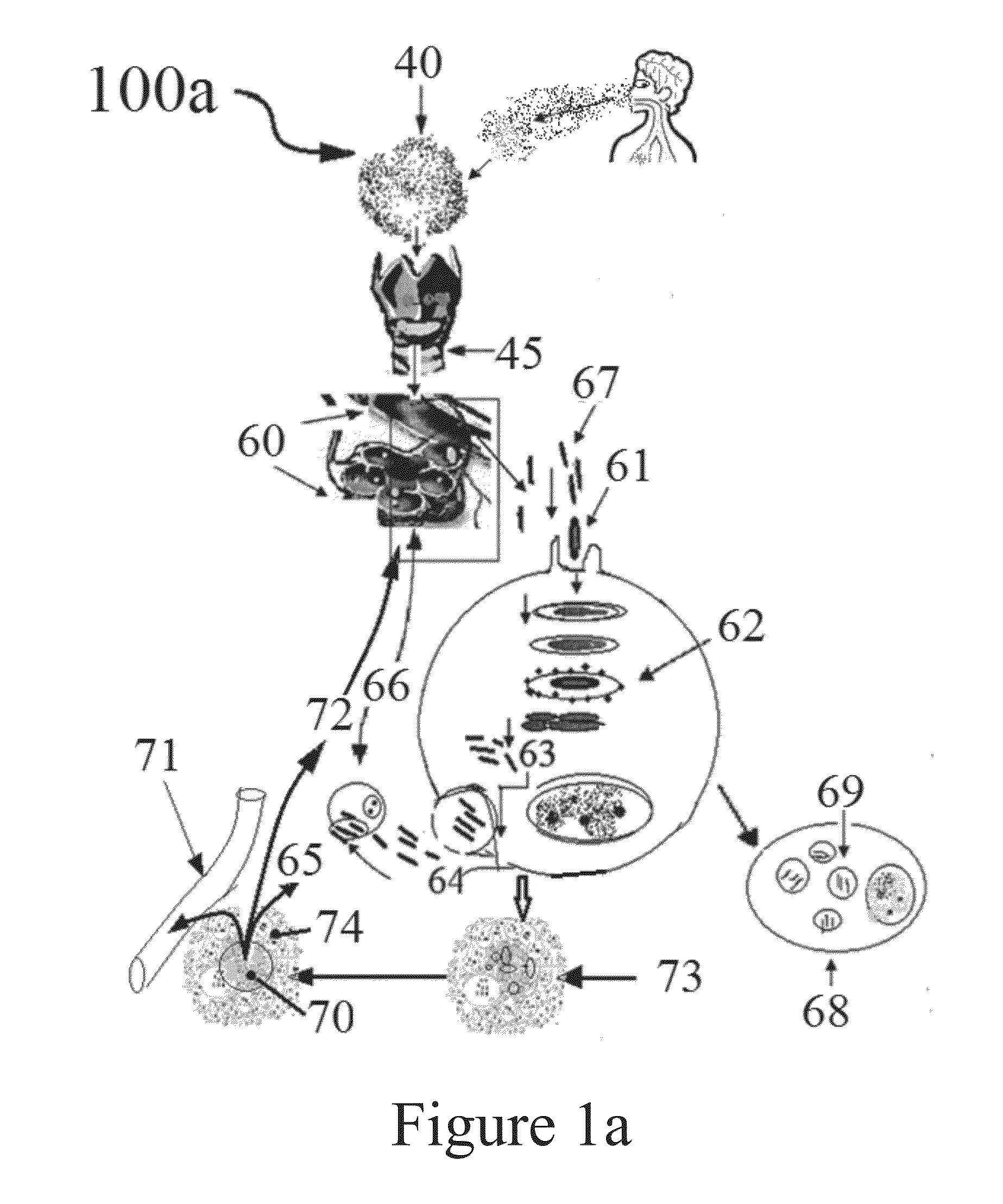In
spite of all these gloomy statistics, there is high success in the
treatment protocol due to WHO program ascribed to the Directly Observed Therapy
Short course (DOTS) strategy, which closely monitors patient adherence to chemotherapeutic regimens, because the compliance is s problem due to prolonged therapy, and due to poor socioeconomic conditions.
However, it required at least one year of treatment in hospital with very expensive
drug bills due to the large amounts of PAS, this meant that the
regimen could not be used widely in any but the richer countries.
Evidence of increased
lung cancer risk among tuberculosis patients.
Other mycobacteria such as
Mycobacterium Africanum, Canetti, and Microti can also cause tuberculosis, but these
Mycobacterium species do not usually infect healthy adults.
This long duration of treatment is necessary due to poor
efficacy of available
antibiotics, including the main drugs
isoniazid and rifampin, against dormant M. tuberculosis
bacteria that persist in particular environments such as
granuloma, caseous material, cavitary TB, and the walls of the cold
abscess.
In addition, the increased number of
bacteria produces anoxic conditions and reduces the local pH (Dannenberg 1994).
Current therapy is
isoniazid (INH) reduces the risk of active TB by as much as 90 percent if taken daily for 9 months, but the compliance is problem.
However, in most TB cases, the immune response is not strong enough, TB lesions (Tubercles) develop in the lungs and the infection moves to the hilar
lymph nodes (FIG. 1a, 5) creating symptomatic primary tuberculosis.
Due to longer duration of treatment extending more than six to twenty four months or more, the expenses involved, and compliance is problematic.
Non adherence to treatment is a major problem in TB control.
It is important to note that the compliance with the relatively long course of treatment is generally poor.
Unfortunately, the results of modern multiple
drug therapy for the treatment of TB due to long therapy, cost and compliance failure are discouraging.
Patients who been never treated before, or treated for less than one month develop
drug resistance are called“Primary
drug resistance” and those who develop resistance M. tuberculosis bacteria to drugs are defined as “acquired
drug resistance” Treatment of MDR tuberculosis are very expensive, toxic, arduous and frequently ineffective.
The use of vaccines to prevent tuberculosis in humans has proved to be a tremendous challenge for almost a century now.
However, these initial promises were not achieved and, from the results of a large number of
efficacy trials, it is clear that the
BCG vaccine in its current form is of limited use in controlling the disease, particularly in respiratory forms in adults in third world areas where the disease is endemic.
This is a widely controversial vaccine because of extremely variant results from no protection to excellent protection (Aeras 2004).
1977); their drawback being cardiac and neurological
toxicity (Musuka S. et. al.
Failure of
drug penetration and acquisition of drug resistance in chronic tuberculous empyema.
Tainter, M. L. (1934) “
Dinitrophenol in Diet, on Growth and Duration of Life of the White Rat” Proc. Soc. Exper. Bioi. Med., 31:1161-1163. Tainter, M. L. et al., “
Dinitrophenol in the Treatment of
Obesity,” JAMA 105, pp. 332-336 (1935). Tainter, M. L. (1938) “Growth, Life-Span and
Food Intake of White Rats Fed
Dinitrophenol throughout Life” J. Pharm. Exp. Ther., 63, No. 1.30. Tainter, M. L. et. al, (1934) “Chronic
Toxicity of Dinitrophenol:
Renal Function” Proc. Soc. Exper. Bioi. Med., 1:1163-1166. “Dinitrophenol on
Liver Function” Calif. and West. Med., 43: No. 5.308. TB Alliance clinical trials. [29 Mar. 2010].www.tballiance.org / new / portfolio /
html-portfolio.php.309. “TB diagnosis: Improving the yield with
fluorescence microscopy”, 2007 www.aidsmap.com / TB-diagnosis-Improving-the-yield-with-
fluorescence-
microscopy / 310. “TB in India: burden, progress, and needs”, TB diagnostics in India conference August 2011, tbevidence.org311. “TB Testing & Diagnosis”, CDC www.cdc.gov / tb / topic / testing / 312. Telenti, A., P. Im, F. Marchesi, D. Lowrie, S. Cole, M. J. Colston, L. Matter, K. Schopfer, and T. Bodmer. 1993. Detection of
rifampicin-resistance mutations in
Mycobacterium tuberculosis. Lancet 341:647-650.313. Thotathil Z, Jameson M B (2007). “Early experience with novel immunomodulators for
cancer treatment”.
Expert Opinion on Investigational Drugs 16 (9): 1391-403.1)."uspto-
list-item">314. Tischler A D, McKinney J D. 2010. Contrasting persistence strategies in
Salmonella and Mycobacterium. Curr. Opin. Microbiol. 13:93-99.315. Tischler A D, Leistikow, R L, Kirksey M A, Voskuil M I, McKinney J D. 2013.
Mycobacterium tuberculosis requires
phosphate-responsive
gene regulation to
resist host immunity. Infect. Immun. 81: 317-328.316. Todar, Kenneth. 2007. “Tuberculosis.” Todar's Online Textbook of
Bacteriology. “Tuberculosis.” Todar's Online Textbook of
Bacteriology.317. Tsukaguchi, K., Balaji, K. N., and Boom, W. H. 1995. CD4+αβ
T cell andell Responses to
Mycobacterium tuberculosis: Similarities ne Production. Journal of
Immunology 154: 1786-1796.318. Tuberculosis
Chemotherapy Centre, Madras. A concurrent comparison of home and sanatorium treatment of
pulmonary tuberculosis in South India. Bull
World Health Organ. 1959; 21:51-144.319. Udwadia, Z., and Amale, R. (2012). Totally drug-
resistant tuberculosis in India. Clinical Infectious. 54, 579-581.320. Valle, A., E. Zanardini, P. Abbruscato, P. Argenzio, G. Lustrato, G. Ranalnd C. Sorlini. 2007. Effects of low
electric current (LEC) treatment on pure bacterial cultures. J. Appl. Microbiol. 103:1376-1385.321. van der Wel Nicole et. al., M. tuberculosis and M. leprae Translocate from the Phagolysosome to the
Cytosol in
Myeloid Cells,
Cell 129 p 1287-1298, 2007322. U.S.
Food and Drug Administration. Information for Healthcare Professionals.
Erythropoiesis Stimulating Agents (ESAs). : Jun. 17, 2009.323. Velayati A A, Masjedi M R, Farnia P, Tabarsi P, Ghanavi J, Ziazarifi A H, Hoffner S E. Emergence of new forms of totally drug-
resistant tuberculosis bacilli: super extensively drug-
resistant tuberculosis or totally drug-resistant strains in Iran. Chest. 2009; 136(2): 420-425.324. Venkataswamy, Manjunatha M.; Goldberg, Michael F.; Baena, Andres; Chan, John; Jacobs, W R., Jr.; Porcelli, Steven A. (1 Feb. 2012). “
In vitro culture medium influences the
vaccine efficacy of
Mycobacterium bovis BCG”. (doi:10.1016 / j.vaccine.2011.12.044. 30 (6): 1038-1049.325. Vernon A, Burman W, Benator D, Khan A, Bozeman L. Acquired
rifamycin monoresistance in patients with HIV-related tuberculosis treated with once-weekly
rifapentine and
isoniazid. Tuberculosis Trials Consortium. Lancet. 1999; 353:1843-1847.326. Veziris N, Ibrahim M, Lounis N, et al. A
once weekly R207910-containing
regimen exceeds activity of the standard daily
regimen in murine tuberculosis. Am. J. Respir. Crit. Care Med. 2009; 179:75-7
9.327. Vilaplana C, Marzo E, Tapia G, Diaz J, Garcia V, Cardona P J.
Ibuprofen therapy resulted in significantly decreased tissue bacillary loads and increased survival in a new murine
experimental model of
active tuberculosis. J Infect Dis. 2013; 208:199-202328. Vilcheze, C., T. Hartman, B. Weinrick& W. R. Jacobs, Jr., (2013)
Mycobacterium tuberculosis is extraordinarily sensitive to killing by a
vitamin C-induced Fenton rNature Communications 4: 1881; doi: 10.1038 / ncomms28
98.329. Vilcheze, C., and Jacobs, W. R. (2007). The Mechanism of
Isoniazid Killing:
Clarity through the Scope of
Genetics. Annual Review of
Microbiology 61, 35-50.330. Wallis R S. Reconsidering
adjuvant immunotherapy for tubercn Infect Dis 2005; 41: 201-8.331. Wallis, R S., Patil, S., Cheon, S. H., Edmonds, K., et. lerance in Mycobacterium tuberculosis.
Antimicrobial Agents and
Chemotherapy 43, 2600.332. Ward, S. K., E. A. Hoye, A. M. Talaat, (2008). The global responses of Mycobacterium tuberculosis to physiological levels of
copper. J. Bacterial. 190: 2939-2946.333. Wardman, P. & L. P. Candeias, (1996) Fenton
chemistry: an introduction. Radiat. Res. 145: 523-531.334. Watson Pharma, Inc. Ferrlecit (
sodium ferric gluconate complex in sucroseUS
prescribing information. Link. Accessed: Jun. 17, 2009.335. Wayne, L. G., and Hayes, L. G. (1996). An
in vitro model for sequential study of shift down of Mycobacterium tugh two stages of non-replicating persistence. Infection and
immunity 64, 2062-2069.336. Wei D Z, Yang J Y, Liu J W, Tong W Y. Inhibition of
liver cancer cell proliferation and migration by a combination of (−)-epigallocatechin-3-
gallate and
ascorbic acid. J Chemother. 2003 December; class="d_n">337. Weiner M, Burman W, Vernon A, et al. Low isoniazid concens and outcome of tuberculosis treatment with once-weekly isoniazid and
rifapentine. Am. J. Respir. Crit. Care Med. 2003; 167:1341-1347.338. Weiner, M., N. Bock, C. A. Peloquin, W. Peloquin, W. J. Burman, A. Khan, A. Vernon, Z. Zhao, S. Weis, T. R. Sterling, K. Hayden, and S. Goldberg. 2004.
Pharmacokinetics of
rifapentine at 600, 900, and 1,200 mg during once-weekly tuberculosis therapy. Am. J. Respir. Crit. Care Med. 169:1191-1197.339. Winder, F., and Collins, P. by isoniazid of synthesis of mycolic acids in Mycobacterium tuberculosis. Journal of General
Microbiology 41-48[ class="uspto-
list-item">340. Wilson, T. M., G. W. De Lisle, and D. M. Collins. 1995. Effof
inhA and katG on isoniazid resistance and
virulence of
Mycobacterium bovis. Mol. Microbiol. 15:1009-1015.341.
World Health Organization (WHO-2008). “Countries with XDR-TB confirmed cases as of June 2008”342. Wong and Holdaway.
Insulin Binding by Normal and Neoplastic: Tissue. Int J
Cancer 35:335-341, 1985343. WHO (2012a). Global Tuberculosis Report,344. WHO. WHO / C
16. WHO; Geneva, Switzerland: 2001. An expanded DOTS framework for effective tuberculosis control.[04 / b>345. WHO Extensively drug-resistant tuberculosis (XDR-TB): recommendations for prevention and control. Wkly Epidemiol. Rec. 2006; 81: WHO The Global Plan to Stop TB 2006-2015. [29 Mar. 2010]. http: / / www.stoptb.org / global / plan / . WHO (2010) Global tuberculosis control. Surveillance, planning, financing. (Report No.: WHO / HTM / TB / 2006.362) Geneva:
World Health Organization.346. WHO (2012b). Treatment of tuberculosis guidelines (Geneva, Switzerland).347. WHO. “Multidrug-resistant tuberculosis (MDR-TB) 2013 Update”. Retrieved 14-6-2013.348. Winder, F., and Collins, P. (1970). Inhibition by isoniazid of synthesis of mycolic acids in
Mycobacterium Tuberculosis. Journal of General
Microbiology 41-48.349. Woollard K J, Loryman C J, Meredith E, et al. Effects of oral
vitamin C on monocytes: endothelial
cell adhesion in
healthy subjects. Commun. 2002 Jun. 28; 294(5):1161-8.350. Wu et al., “Identification and
Subcellular Localization of a Novel Cu, Zn
Superoxide Dismutase of Mycobacterium tuberculosis” FEBS Letters 439:192-196, 1998.351. www.sciencedaily.com / releases / 2011 / 01 / 110102202238.htm. Evidence of increased
lung cancer risk amo
 Login to View More
Login to View More 


